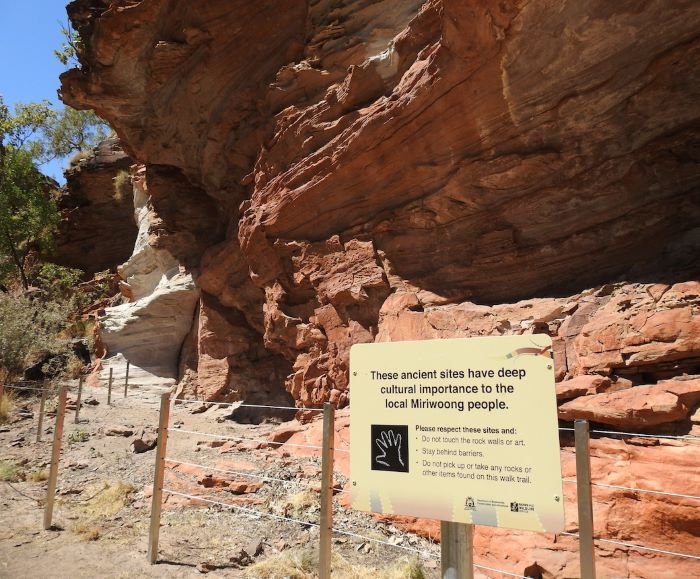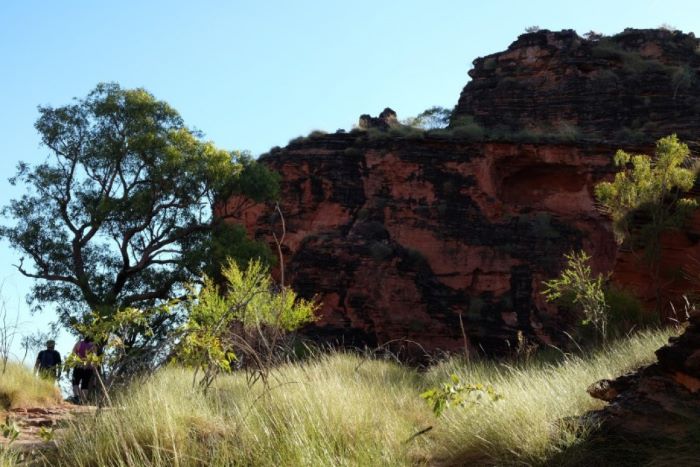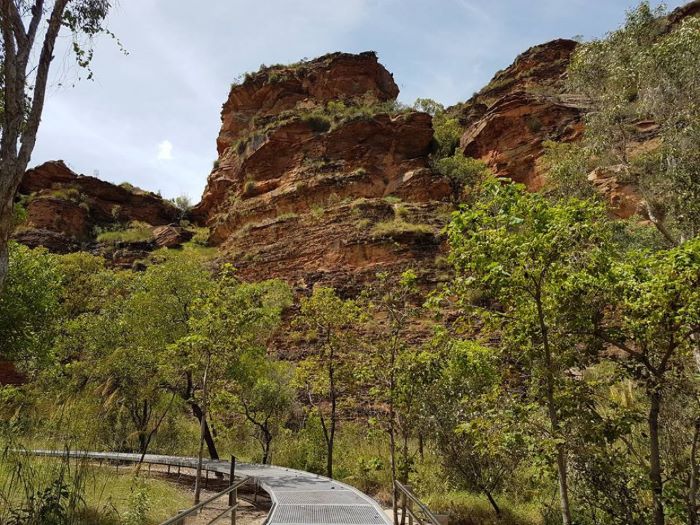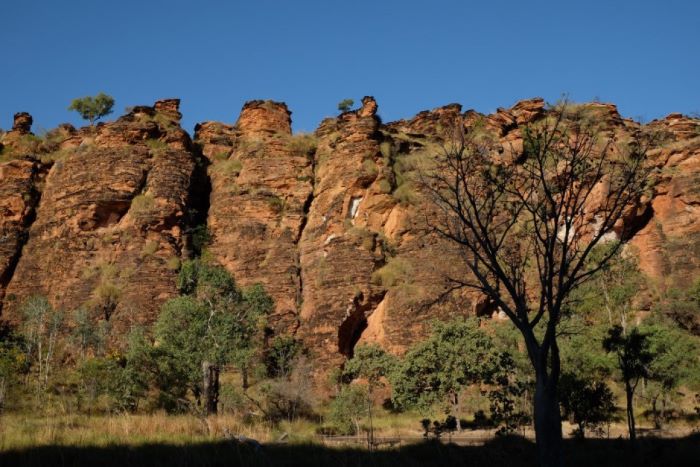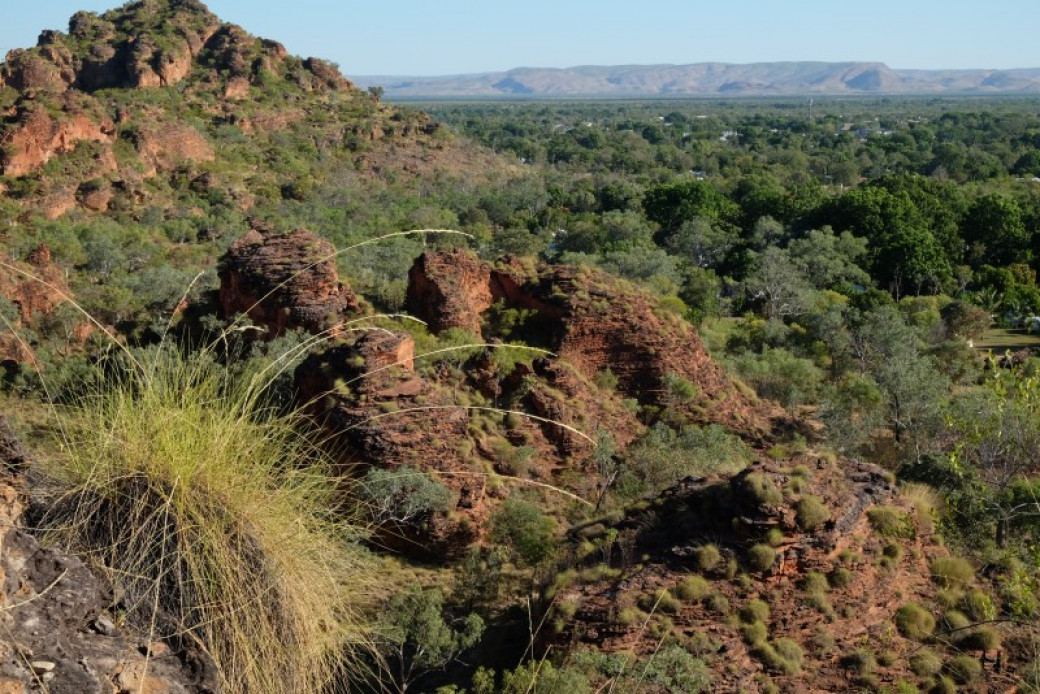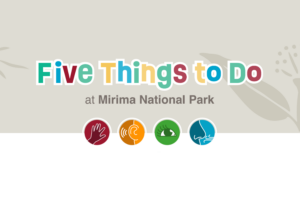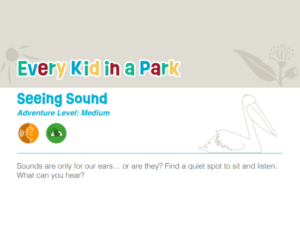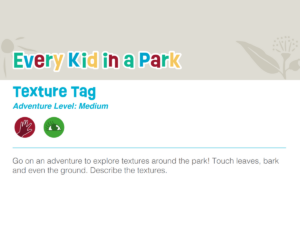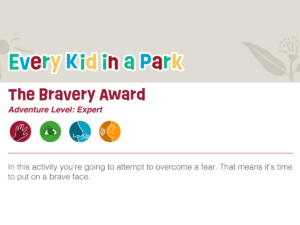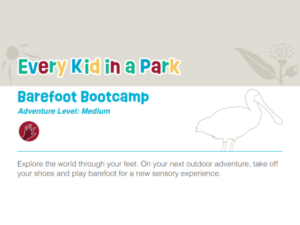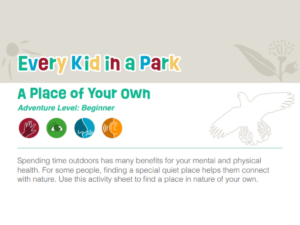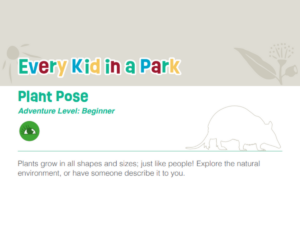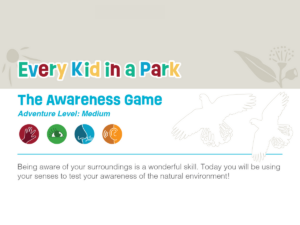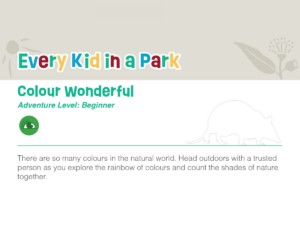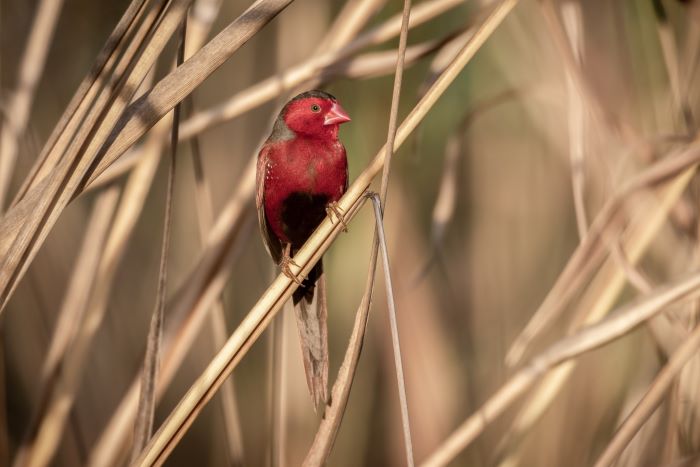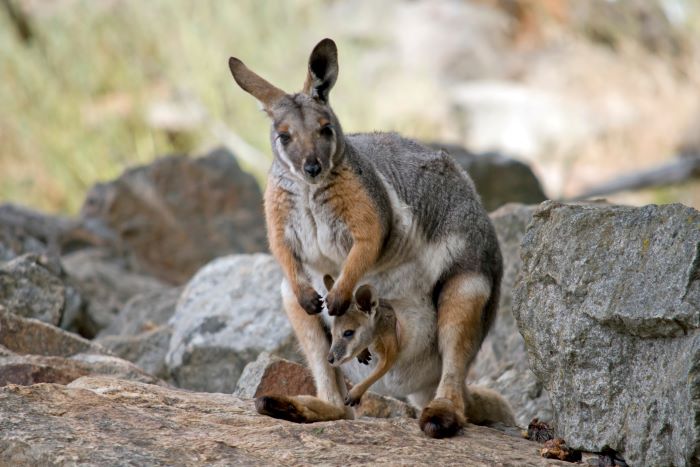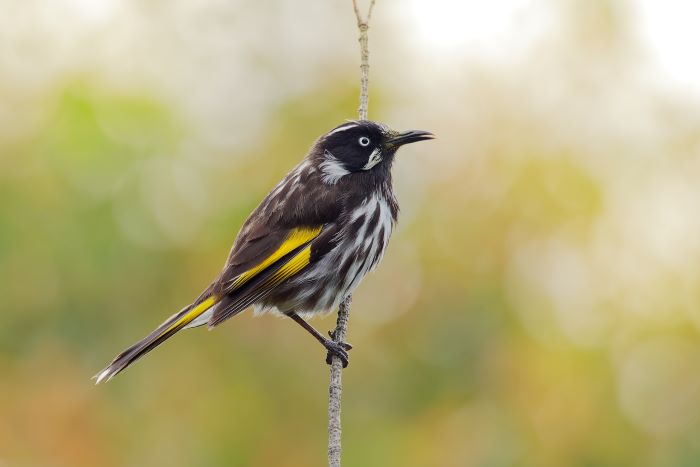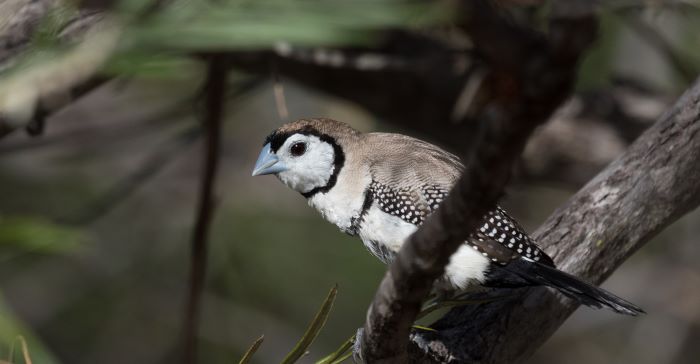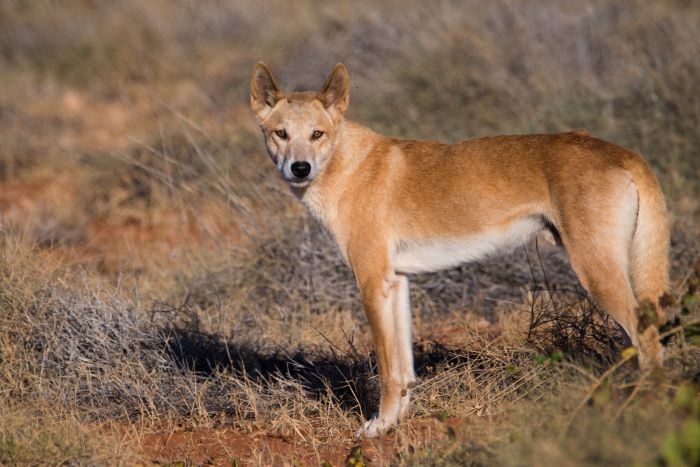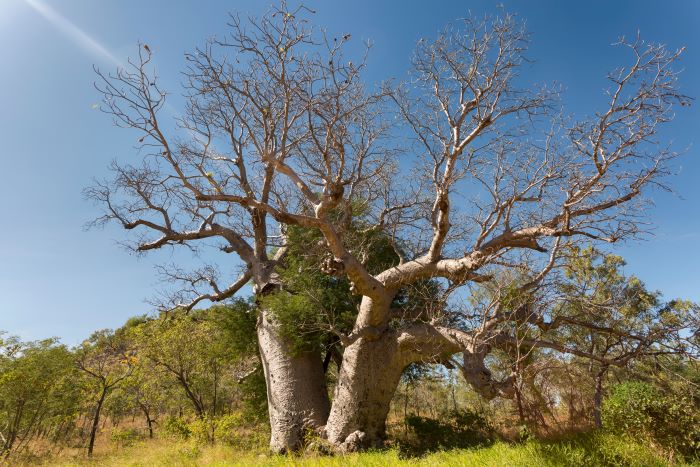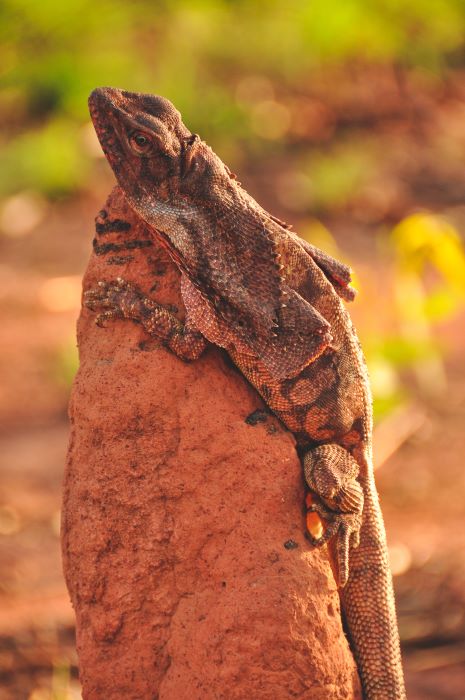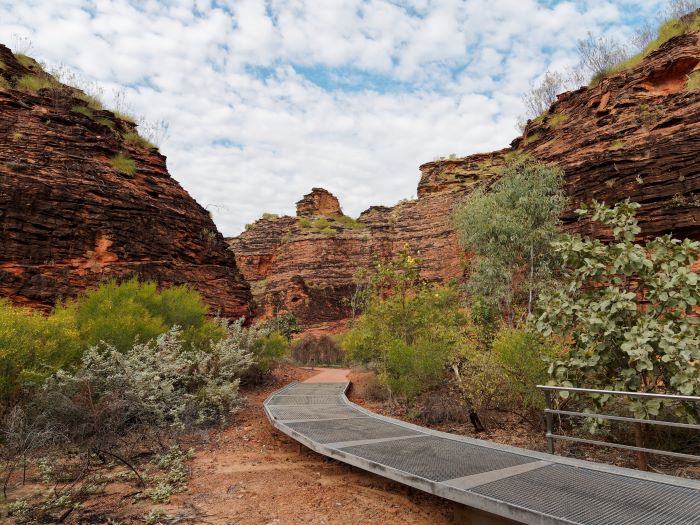Mirima National Park
Website Accessibility
For a more accessible experience of our website, you'll notice our Accessibility Tool in the corner of your screen. Click on the button to access the user-triggered customisations.
Cultural Recognition
We recognise and acknowledge Miriwoong Gajerrong people as the traditional owners of Mirima National Park.
Overview of Mirima National Park
If you’re staying in or passing through Kununurra, make sure you explore Mirima National Park!
Kununurra is located almost 3000 kilometres north-east of Perth. It’s a great place to stop if you are exploring the Kimberley region, and Mirima National Park is just a five (5) minute drive from the town’s Visitor Centre.
Mirima National Park’s main attractions are the remarkable ancient rock formations – the park is even sometimes referred to as “the mini Bungle Bungles” – and the beautiful walk trails.
The sandstone rocks here are around 300 million years old! Over time, the rocks have been shaped in spectacular ways – some tall and jagged, others flat and smooth.
The five (5) walk trails in Mirima National Park will have you weaving past cliffs and through valleys, and seeing the local flora and fauna up close. There are also opportunities to learn about the culture of the Miriwoong people on the Looking at Plants Nature Trail and the Yoorrnging Geranyem Banan Trail.
Walk in the morning or evening to not only avoid the heat, but to see a spectacular sunrise or sunset from one of the lookouts. Keep an ear out for the beautiful birdlife, and watch for wallabies.
Fees apply for entry into Mirima National Park, which contribute to park management, including protection of the environment and the development and maintenance of visitor services and facilities.
Cost of Entry*
Private vehicle with up to 12 occupants
- $17 per vehicle
- $10 per vehicle concession
Private vehicle with more than 12 occupants
- $8 per occupant 6 years or older
- $3.50 per occupant concession
Motorcycle
- $10 per motorbike
- No concession
No entry fee applies if you walk or cycle into the park.
*Prices accurate as of January 2024, refer to the Explore Parks WA website for up to date pricing.
Download the Every Kid in a Park app to use the interpretive map featuring photographs and additional information about each point.
Points of Interest
Key points of interest include:
- Demboong Banan Trail
- Derdbe-Gerring Banan Trail
- Gerliwany-gerring Banan Trail
- Hidden Valley
- Yoorrnging Geranyem Banan Trail
Resources
Nature Play WA is currently creating fun and interactive resources for Mirima National Park. Throughout May, we will be releasing these resources to assist families in planning their visit to the park
This resource is all about our five favourite things to do at Mirima National Park. It’s available to download as a PDF or Accessible Word version, to help you plan your visit. Download PDF version Download Accessible Word version
Every Kid in a Park Resources
Discover fun activities to do at any park!
Become a master of scents by searching for and combining the best smells of nature. Can you create the perfect perfume? This document is available to download as a PDF or Accessible Word version, to help you plan your visit. Download PDF version Download Accessible Word version
Sounds are only for our ears……. or are they? Find a quiet spot to sit and listen. What can you hear? Use this activity sheet to record and describe the sounds. This document is available to download here. Download your copy
Use this activity sheet to go on an adventure and explore textures around the park! Touch leaves, bark and even the ground, and describe the features. This document is available as a PDF and an Accessible Word version, to help you plan your visit. Download PDF Download Accessible Word version
With the help of this activity sheet, you’re going to attempt to overcome a fear. That means it’s time to put on a brave face! This document is available to download here. Download your copy
Explore the world through your feet with the help of this activity sheet. On your next outdoor adventure, take off your shoes and play barefoot for a new sensory experience! This document is available to download here. Download your copy
For some people, finding a special quiet place helps them connect to nature. Use this activity sheet to find a place in nature of your own. This document is available to download here. Download your copy
Plants grow in all shapes and sizes; just like people! Use this activity sheet to explore the natural environment, or have someone describe it to you. This document is available to download here. Download your copy
Find a good place to sit or lay down and watch the clouds in the sky. Take notice of their colours, textures and shapes, or have someone describe these to you. Use this activity sheet to create a story in the sky! This document is available to download here. Download your copy
Being aware of your surroundings is a wonderful skill. In this activity, you will be using your senses to test your awareness of the natural environment! This document is available to download here. Download your copy
There are so many colours in the natural world. In this activity, you’ll head outdoors with a trusted person as you explore the rainbow of colours and count the shades of nature together. This document is available to download here. Download your copy
Biodiversity
The savannah woodland of Mirima National Park is home to many of Australia’s unique native plants and animals.
Agile wallabies, rock wallabies and wallaroos are often spotted hopping about the rock formations and feeding on grasses. Dingoes are also commonly seen here.
Flitting about the trees are crimson finches, double-barred finches, red-backed fairy-wrens and Australian honeyeaters. White-quilled rock pigeons roost atop the rocky cliffs and towers, coming down to the sandy ground to forage in the early morning and evening. Larger birds, like black kites, can be seen soaring overhead.
Many species of pythons, lizards and snakes can be found in Mirima National Park, and will often be seen basking in the sun on a warm day. See our Safety section for a guide to dealing with snake sightings.
Wattles, woollybutts and rough leaf range gums are just some of the trees that grow throughout the park, offering shade and food to the local animals. Grevilleas and turkey bushes add a splash of colour to the landscape.
A large boab tree grows near the entrance to Mirima National Park. Some of these endemic trees are 1,500 years old, or older! They’re known for their unique, bottle-shaped trunks, which can grow to almost 20 metres in girth. Aboriginal people used the boab tree for shelter, and as a source of food, water and medicine.
Safety
We suggest taking time before your visit to read through the safety information. We recommend visiting the Explore Parks WA website to plan when to visit Mirima National Park.
Mirima National Park is a great place for bushwalking. Before you head out in nature, visit the Explore Parks WA website for tips on bushwalking safety.
In Mirima National Park, many reptiles emerge to bask in the sun. During this time, you should take precautions to minimise the chance of encountering snakes:
- Take care in bushland and grassy areas.
- Walk in cleared areas only, where you can see the ground, and keep to established tracks.
- When bushwalking, wear long trousers and boots or other enclosed footwear that preferably cover the ankles.
- Keep a watchful eye on the ground about a metre ahead of where you are walking, and avoid entering areas of long grass, rushes and undergrowth.
Temperatures can exceed 40 degrees in summer, and there is no water available at Mirima National Park. We recommend visiting during the dry season months (April to September), and ensure you take plenty of water and sun protection with you.
Conservation
Mirima National Park is an important location to the Miriwoong people, and home to many plants and animals. Follow the tips below to assist in the protection of the Mirima National Park environment.
- Only follow marked walk trails and roads.
- Leave no trace. Ensure all food and rubbish is contained and out of reach of wildlife, and take all belongings with you when you leave.
- Do not feed wildlife.
- Do not disturb or displace plants and animals.
Acknowledgements
Visit the Explore Parks WA website for more information about Mirima National Park.
Nature Play WA would like to thank the Department of Biodiversity, Conservation and Attractions for providing valuable information about Mirima National Park.

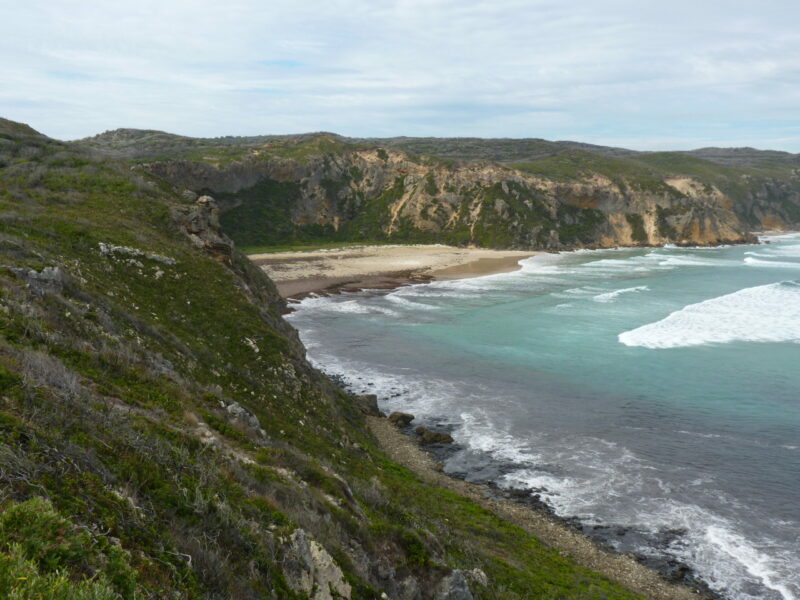
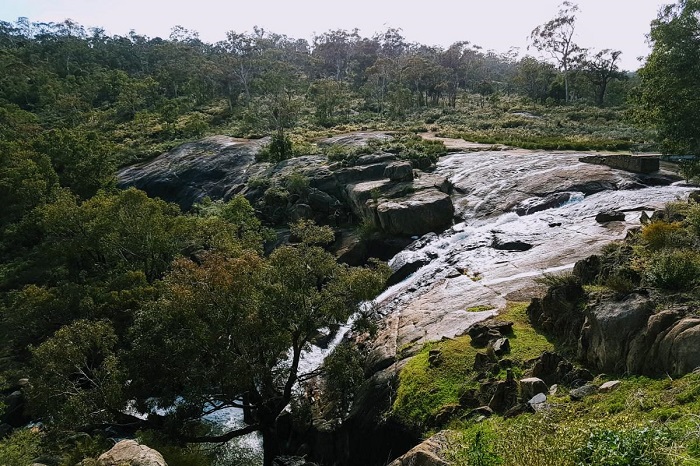 Empty heading
Empty heading